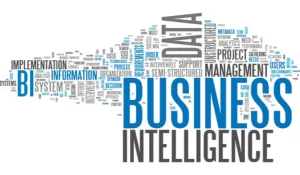Business have a larger amount of data at their disposal. Even though data and intuition show that some leads are better than others, sales teams struggle to effectively prioritize good leads over bad ones. When they fail with lead prioritization, they spend the same amount of effort on bad leads as they do on good leads.
In the Lending Industry though effective lead prioritization is listed as the number one priority many of the methods being used are simple and rudimentary. These vary from online lead origination to tracking customer behavior on the websites and social media platforms.
Although achievable, it is likely that you’ve missed out on some leads by the time you’ve gone through that process. And we all know how time sensitive it is to convert a lead on time.
Here technology and automation can help the sales team prioritize leads, ensuring the team focus their efforts on best leads.
One way to do this is by having a data-driven lead scoring system.
With the advent of AI & Machine Learning, businesses have a way of prioritizing leads based on type of customer, buying journey, demographics, past performance etc.
ML to CONVERT potential LEADS
Data-driven lead scoring takes the traditional lead scoring approach to the next level by applying big data and machine learning algorithms to evaluate the key behaviors of existing customers and prospects and rank them against a scale that can distinguish customers and prospects who are more likely to convert, retain, or buy from the company’s products and services.
The first step in the lead prioritization is to analyze profile data to find out how well the lead fits your target audience and how aligned your product or service is with the needs of the lead. AI driven customer engagement pattern analysis helps you to determine the minimum level of engagements (by different channels) that leads to successful conversions. The model evaluates the relationship between various attributes associated with customers and prospects and the identified behavior (i.e. customer purchase) and score them based on the propensity to achieve the identified behavior.
With that new scoring, the sales team can then prioritize their time, and only spend time on the leads that are highly likely to become paying customers.
How to leverage lead scores in business operations
1. Effectively segment customers and prospects based on the predicted lead scores and put them into distinct buckets
2. Systematically monitor the relationship between predicted lead scores and customer purchase rate
3. Accurately provide valuable insights on the key optimization indicators
In conclusion, lead scoring model provides the necessary inputs to what a modern company needs to be successful. It not only uncover key insights on highlighting promising leads, and retain or even make a purchase based on the real-time data collected from existing and prospect customers, as well as products, and services, but also helps the company benchmark and reveal key optimization indicators and track key customer profile and segments consistently in order to paint the complete picture of what sells well versus not well the existing and prospect customer base.





